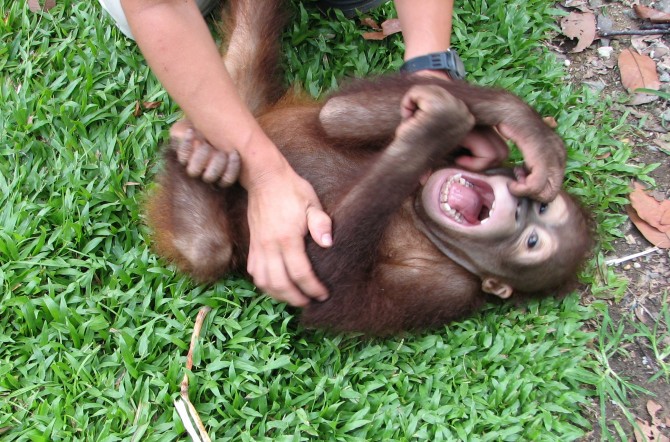The evolution of laughter
Forthcoming in Current Biology: "Reconstructing the Evolution of Laughter in Great Apes and Humans" by Marina Davila Ross, Michael J Owren, & Elke Zimmermann.
Summary:
Human emotional expressions, such as laughter, are argued to have their origins in ancestral nonhuman primate displays. To test this hypothesis, the current work examined the acoustics of tickle-induced vocalizations from infant and juvenile orangutans, gorillas, chimpanzees, and bonobos, as well as tickle-induced laughter produced by human infants. Resulting acoustic data were then coded as character states and submitted to quantitative phylogenetic analysis. Acoustic outcomes revealed both important similarities and differences among the five species. Furthermore, phylogenetic trees reconstructed from the acoustic data matched the well-established trees based on comparative genetics. Taken together, the results provide strong evidence that tickling-induced laughter is homologous in great apes and humans and support the more general postulation of phylogenetic continuity from nonhuman displays to human emotional expressions. Findings also show that distinctively human laughter characteristics such as predominantly regular, stable voicing and consistently egressive airflow are nonetheless traceable to characteristics of shared ancestors with great apes.



